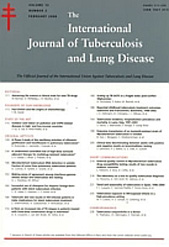Posted on June 01, 2016
Source: The International Journal of Tuberculosis and Lung Disease

Mave, V.; Chandanwale, A.; Kinikar, A.; Khadse, S.; Kagal, A.; Gupte, N.; Suryavanshi, N.; Nimkar, S.; Koli, H.; Khwaja, S.; Bharadwaj, R.; Joshi, S.; Horng, H.; Benet, L. Z.; Ramachandran, G.; Dooley, K. E.; Gupta, A.; Gandhi, M.
Assessing treatment adherence and quantifying exposure to anti-tuberculosis drugs among children is challenging. We undertook a ‘proof of concept' study to assess the drug concentrations of isoniazid (INH) in hair as a therapeutic drug monitoring tool. Children aged <12 years initiated on a thrice-weekly treatment regimen including INH (10 mg/kg) for newly diagnosed tuberculosis were enrolled. INH concentrations in hair were measured using liquid chromatography-tandem mass spectrometry at 1, 2, 4 and 6 months after initiating anti-tuberculosis treatment. We found that INH hair concentrations in all children on thrice-weekly INH were detectable and displayed variability across a dynamic range.